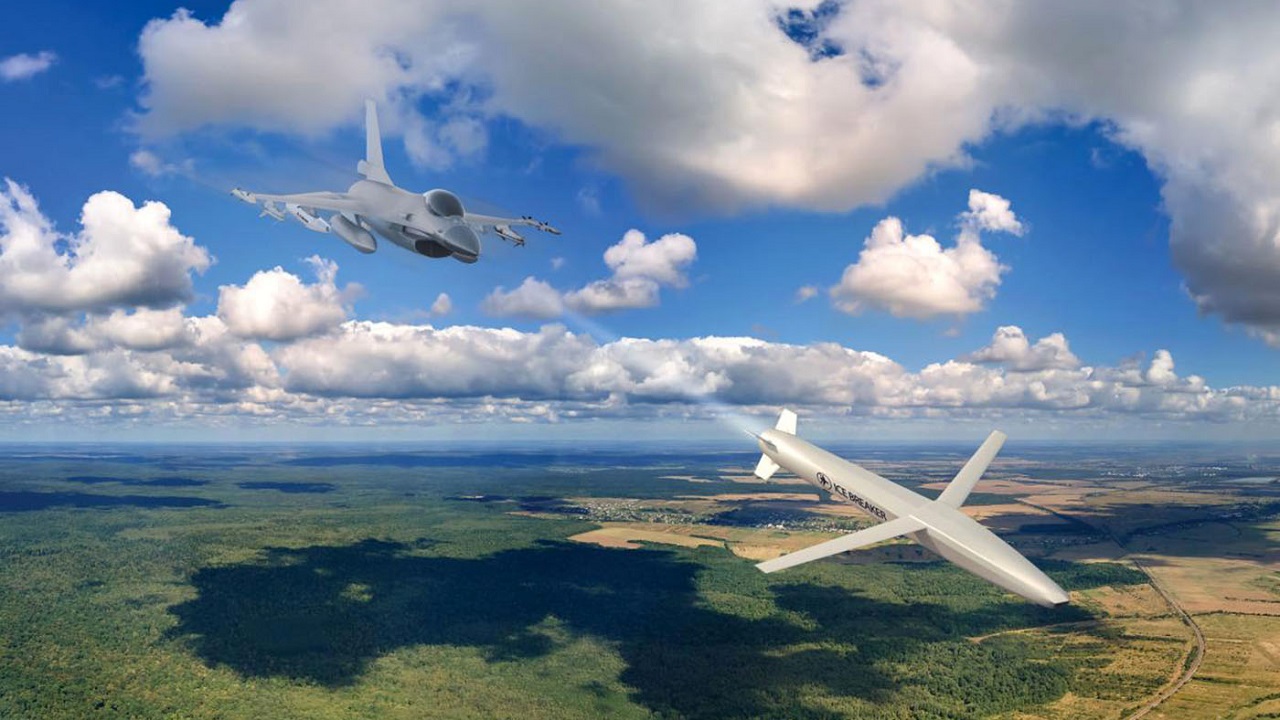The Israeli company Rafael Advanced Defense Systems debuted a new long-range strike missile in a press release last week. Essentially an air-launched variant of the Sea Breaker weapon Rafael revealed in 2021, the new Ice Breaker missile will be equipped with advanced and unique capabilities. In its press release, Rafael detailed it was seeking a U.S. company to collaborate on the manufacture of the missile, which the company hopes will soon enter service in a military capacity.
In 2021, Rafael introduced its precision-guided long-range autonomous naval strike anti-ship missile system (ASHM) dubbed The Sea Breaker. Described by its manufacturer as a “naval and artillery force multiplier,” the weapon was designed to be an effective asset for next-generation sea and land threats. Capable of being fired from a variety of naval vessels, including frigates and fast attack missile boats, the missile can be launched from a distance without coming within range of the target’s air defenses. According to Jane’s Defense, at “approximately 350 mm in diameter, less than 4 meters in length, and weighing under 400 kg, the new (Sea Breaker) missile is equipped with an advanced Rafael-proprietary 107 kg penetrate, blast, and fragmentation warhead, which, the company says, is capable of neutralizing a frigate-sized ship in a single hit”.
Breaking the Ice
Similar to the Sea Breaker, the newly unveiled Ice Breaker’s advanced datalink allows for real-time decision-making and is equipped with a mid-flight abort capability and battle damage assessment (BDA) function, which allows its operators to view the intended target once the weapon is launched. A Rafael official told Defense News that “The program is a multiservice, long-range-type missile. A year ago, we were under a security embargo and we could only release [details of] the Sea Breaker derivative. Now we can show the whole ballgame. It’s a multiservice missile, [an] air, ground and naval solution [that] can attack targets at land and sea.”
The official elaborated that the Ice Breaker is capable of launching off of a variety of aircraft, including helicopters. They specifically cited the Puma helo, the Gripen, M-346, and F-16 jets as airframes able to carry the new fifth-generation missile. The official added that “Another couple of key parameters is that it is GPS-independent, for single or salvo attack. It’s a kind of low-observable type of configuration with full compatibility [with other Rafael systems]. For instance, if you use Spice 1000, then you can use Ice Breaker. It’s unique to get this range and 350-kilogram [overall weight] and low trajectory.”
Seeking U.S. Partners
It is important for Rafael to secure a U.S. company for budgetary and export reasons. Many international militaries utilize U.S. airframes, therefore, Rafael could expand its number of potential buyers. Additionally, if Rafael jointly produces the Ice Breaker with a U.S.-based manufacturer, Israel could use the Foreign Military Financing dollars Congress provides primarily to be used to purchase American-made weapons in the process.
A Rafael official explained this sentiment to Breaking Defense, outlining that “The portion of the FMF funds Israel is getting from the US that can be exchanged to Israeli currency is lowered each year until it gets to zero in a few years,” the source noted. “Production of such an advanced missile in the US will enable Israel to purchase it using FMF dollars.”
While no U.S. company has signed on to the co-production agreement for the Ice Breaker yet, both U.S.-based Lockheed Martin and Raytheon Technologies have existing relationships with the Israeli manufacturer.
In 2021, Lockheed partnered with Rafael to jointly design, produce, and manufacture Rafael’s smart, precise impact, and cost-effective (SPICE) 250 weapon system. A family of air-to-surface autonomous weapon systems, SPICE enabled precision, high-volume strikes in regions with limited to no GPS availability. One year earlier Raytheon technologies collaborated with Rafael to form a joint venture, building an American version of the Iron Dome missile defense system. The partnership was established to set up the premier Iron Dome “all-up-round” facility on American soil, which would construct “Iron Dome systems, the Tamir interceptor and launcher and the SkyHunter missile (the U.S. variant of Tamir),” according to a report released by Defense News in 2020. Rafael and Raytheon have also teamed up to jointly produce David’s Sling, Israel’s additional advanced air defense system.
The debut of the new fifth-generation Ice Breaker missile coincided with U.S. President Joe Biden’s departure from the Middle East. Biden and his Israeli counterparts discussed the importance of ties between the two countries and the state of joint defense strategies. Once an agreement is worked out, the Ice Breaker will ultimately serve as the latest example of U.S-Israeli collaboration.
Maya Carlin is a Middle East Defense Editor with 19FortyFive. She is also an analyst with the Center for Security Policy and a former Anna Sobol Levy Fellow at IDC Herzliya in Israel. She has by-lines in many publications, including The National Interest, Jerusalem Post, and Times of Israel.

